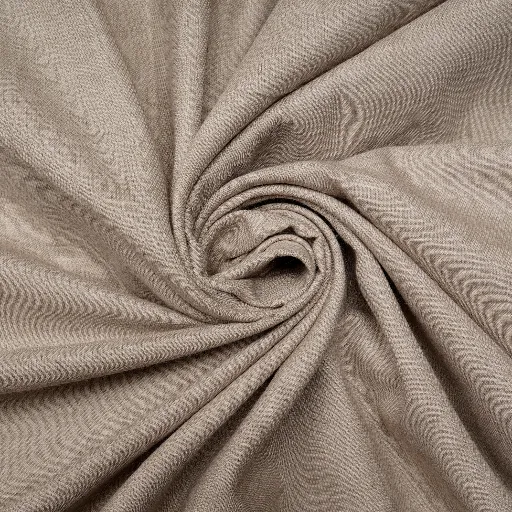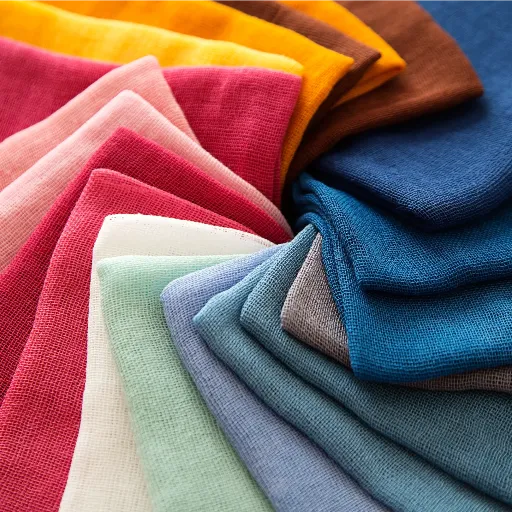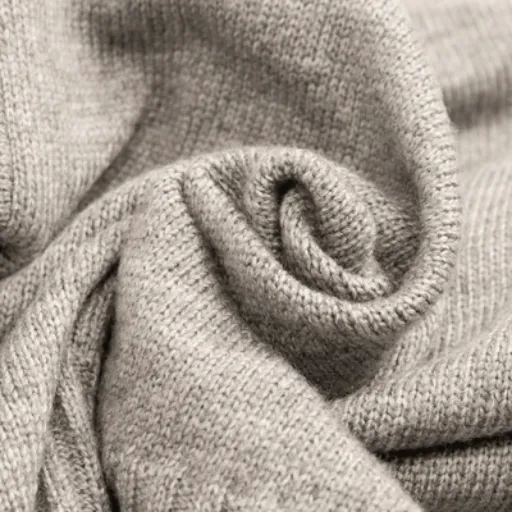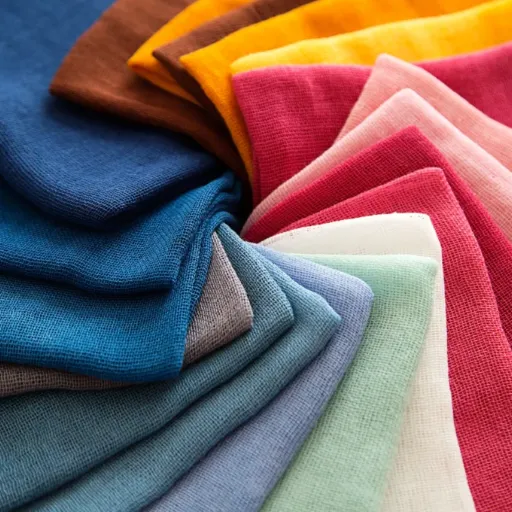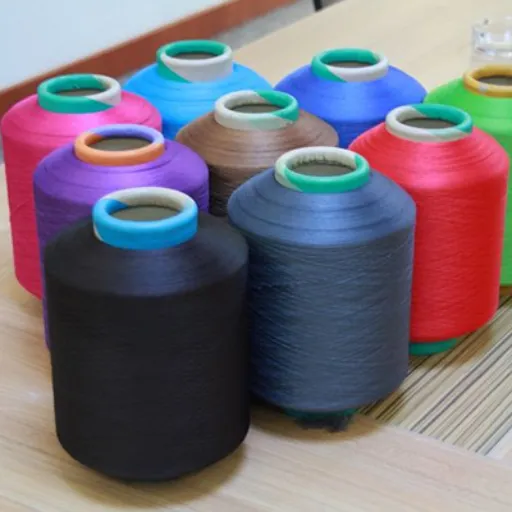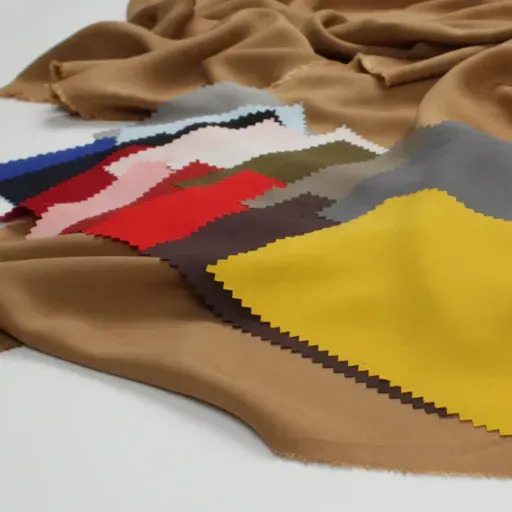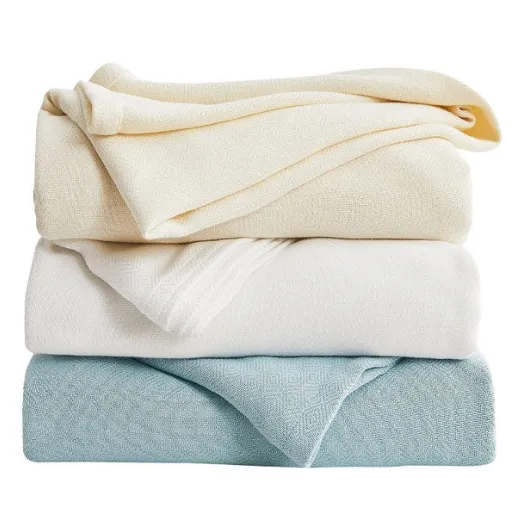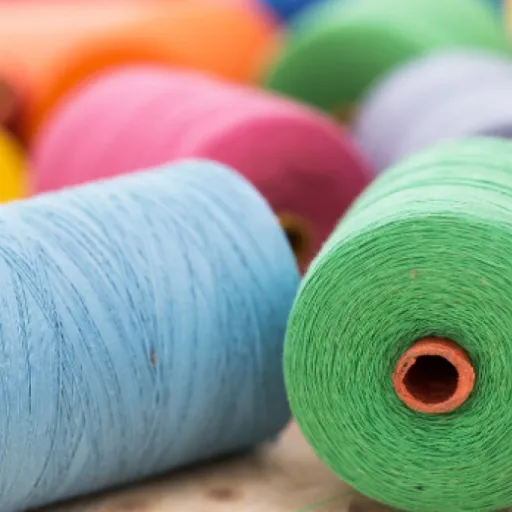For textile environment needs like apparel and upholstery, few fabrics are so hotly debated as cotton and polyester. Both fabrics are quite common in the textile trade, yet they are opposites in composition, property, and usability. It is fundamental to understand these differences to make an informed decision regarding these issues: do you want comfort, durability, or easy maintenance? In this article, cotton and polyester fabrics will be tackled in-depth. Their pros and cons, with typical applications, will be presented. After reading, you will be clearer on which fabric to go for on your needs and the reasons behind it.
Cotton vs Polyester: An Overview
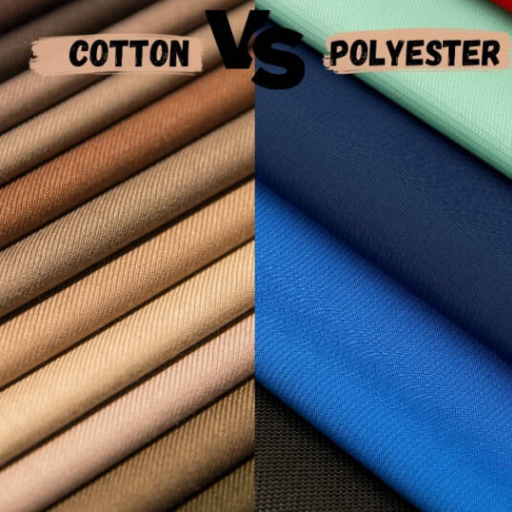
Cotton and polyester stand as probably two of the most widely chosen fibers for fabrics, each having its indelible effect on a particular application; since cotton is a natural fiber, it is soft, breathable, and comfortable and hence great for casual wear and bedding. It absorbs moisture and is biodegradable, and the wrinkling and shrinking effects can be disadvantageous.
On the other hand, polyester fiber, which is synthetic, has been greatly appreciated for its durability along with resistance to wrinkle, quick drying, ability to repel moisture to a lesser extent, slightly less breathable than cotton but, remains stretchy and easy to care for, its uses include active clothing, outdoor wear, and industrial fabric.
Choosing between cotton and polyester depends primarily on the intended use of the fabric. Cotton will be preferred if comfort and breathability are desired; however polyester will work best for the durability and easy-care category.
What is Cotton?
Cotton is a seed fiber that nature produces from the seed hairs of the plants in the genus Gossypium. It is known for softness and is breathable and hypoallergenic; cotton is, to this day, one of the most widely manufactured fibers for textile work. Being mainly cellulose, the fiber grants it a lightweight structure and moisture-absorbing qualities. It is quite versatile and finds uses in making clothes, home furnishings, and industrial applications. Another factor in favor of cotton is its reparability, provided the fiber is left untreated with any synthetic chemicals, thus being an environmentally conscious choice over many existing synthetic alternatives. Recent improvements in cotton yield have taken place from an agricultural approach, while organic cotton farming is an environmentally conscious choice in agriculture that refrains from utilizing any synthetic pesticides and fertilizers.
What is Polyester?
Usually, polyester is a synthetic substance that is formed in polymerization from petroleum-derived substances. With purified terephthalic acid (PTA) or dimethyl terephthalate (DMT) combined with monoethylene glycol (MEG), this versatile material finds application in the fiber and textile industry by virtue of its lasting quality, its strength, and resistance to stretching, shrinkage, and forming wrinkles. Polyester blends are often found with natural fibers for their better performance in terms of durability and easy maintenance requirements. They are also fairly resistant to environmental conditions such as UV radiation and moisture, thus making their applications in outdoor and industrial purposes ideal. Modern techniques facilitate the recycling of polyester materials, of which post-consumer plastic bottles are an example, thus reducing the environmental load to promote a greener life for this incredibly versatile fiber.
Key Differences Between Cotton and Polyester
|
Parameter |
Cotton |
Polyester |
|---|---|---|
|
Material Source |
Natural, plant-based fiber |
Synthetic, petroleum-based fiber |
|
Moisture Absorption |
Highly absorbent, retains moisture |
Low absorbency, quick-drying |
|
Breathability |
Highly breathable, ideal for hot weather |
Limited breathability, traps heat |
|
Durability |
Moderate durability, wears over time |
Highly durable, resistant to wear |
|
Softness |
Naturally soft and comfortable |
Generally less soft unless blended |
|
Stretchability |
Limited stretch, prone to shrinking |
High stretch, maintains form |
|
Maintenance |
Requires more care, prone to wrinkling |
Low maintenance, wrinkle-resistant |
|
Environmental Impact |
Biodegradable, higher water usage |
Non-biodegradable, can use recycled plastics |
|
Cost |
Typically more expensive |
Generally more affordable |
|
UV Resistance |
Limited protection, fades with exposure |
High UV resistance, colorfast |
|
Moisture Evaporation |
Retains dampness, dries slowly |
Dries quickly, moisture-wicking |
|
Allergy Concerns |
Hypoallergenic, gentle on skin |
May irritate sensitive skin |
|
Thermal Properties |
Insulates well in cooler weather |
Poor insulation, less warmth |
Understanding the Fiber
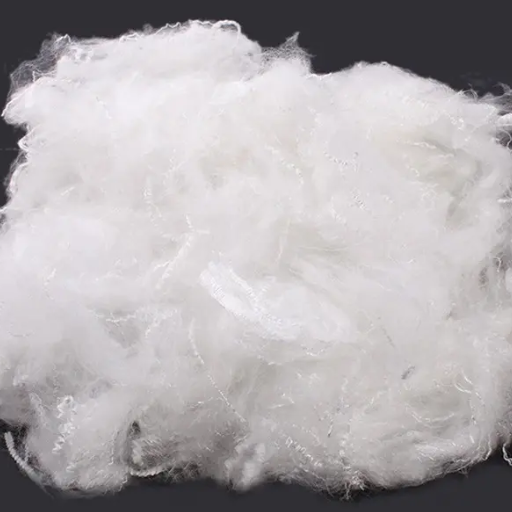
The choice between natural and synthetic fibers depends primarily on the intended use and required performance characteristics. Natural fibers, such as cotton and wool, excel in insulation, breathability, and hypoallergenic qualities, making them ideal for cold weather and sensitive skin. On the other hand, synthetic fibers, like polyester and nylon, are highly durable, UV-resistant, and quick-drying, which suits activewear and outdoor applications. When selecting a fiber, consider factors such as environmental impact, cost, and the specific demands of the product’s use case to make an informed decision.
Cotton Fiber Characteristics
- Fiber Length (Staple Length):
-
- Cotton fibers are classified on the basis of their staple length, varying generally from about 0.5 to 2.0 inches (1.27 to 5.08 cm). Long staples are now considered high-quality cotton, and repetition and strength are also ascribed to it; Egyptian and Pima, representing the best varieties, are among these.
- Strength and Durability:
-
- Cotton fibers exhibit a fair amount of strength with a tensile strength of around 3-4 g/denier; however, in contrast with synthetic fibers, which are generally stronger, cotton maintains this strength when dry but offers much more comfort.
- Moisture Absorption (Hydrophilicity):
-
- Cotton is a good absorber, with a moisture regain of up to 8.5% under normal atmospheric conditions. Making use of this, cotton-based fabrics are designed with breathability and moisture management in mind.
- Thermal Insulation & Comfort:
-
- Cotton provides natural insulation while being breathable. The cellular structure keeps the body temperature regulated, offering comfort in warm and moderate cold conditions.
- Chemical Resistance & Reactivity:
-
- Cotton behaves well against alkalis and thus suitable for use with bleach and dyes. Cotton does not have a good resistance to acids and is thus easily degraded by them.
Polyester Fiber Characteristics
- Strength and Durability
-
- Polyester has a high tensile strength, thus resisting wear and tear.
- It has great resistance to abrasion so that it can be used for long times in situations where it is subjected to great stress.
- Moisture Absorption
-
- Polyester fiber has typically very low moisture absorption, generally less than 1% in terms of its weight in water.
- That characteristic renders quick drying and resistance to mildew or mold from growing.
- Thermal Behavior
-
- Polyester fibers possess a good heat-resistance property, melting at a temperature range of around 482-500℉ (250-260℃).
- A softening effect, at about 230-240℉ (110-115℃), is important to consider during thermal processing within manufacturing.
- Chemical Resistance & Reactivity
-
- Now, polyester is very resistant to most chemicals, including weak acids and alkalis.
- Polyester resists organic solvents, oils, and greases; hence, the industrial applications.
- Dimensional Stability
-
- Polyester fibers are dimensionally stable, resisting shrinkage and stretching under normal use conditions.
- This property further enhances the performance of textiles interwoven with polyester where precision is required.
Cotton and Polyester Blended Fabrics
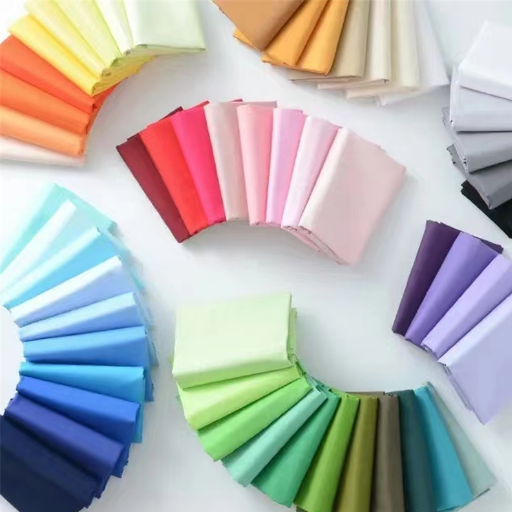
Cotton and polyester blends retain the sumptuous comfort of cotton against the toughness and low upkeep of polyester. These blends aim to counterbalance the superior comfort of cotton, which is wrinkle-susceptible and absorbs moisture, with the ability of polyester to resist wrinkles and stretching. Ratio levels commonly used are 50/50 or 65/35 of polyester to cotton fabric performance, which varies with application in clothing, bedclothes, and technical textiles. This enhances the life span of fabric, for easy maintenance, and further broadens its employ across industry domains.
Benefits of a Polyester Blend
- Durability and Longevity
Polyester blends have high resistance to wear and tear, much more so than pure cotton, and their lifespan is consequently longer. According to some studies, polyester-cotton blends have been found to have between 20% and 30% more tensile strength than pure cotton. Thus, polyester blends can be safely recommended for use in the manufacturing of materials that are subjected to frequent handling and washing in their applications.
- Wrinkle Resistance
Due to the inherent properties of polyester, blended fabrics retain all of the form and shape of the garment and remain wrinkle-resistant. And gradually, this property causes a greater reduction in ironing, making them simultaneously useful for industrial and personal use.
- Moisture-Wicking Capabilities
Polyester represents the hydrophobic characteristics in that it repels water, whereas cotton absorbs moisture. So in combination, the resultant fabric is given balanced moisture control that enables quick drying, making the polyester-cotton fabrics ideal for activewear and uniforms.
- Enhanced Breathability
Cotton in polyester blends helps in breathing, whereas polyester does not let clothes retain excess moisture. The two suit well together to provide comfort to the wearer, more especially in warm or damp conditions.
- Color Retention
Polyester has good fastness of color properties. The fabric does not run off colors with few or many washes. A blended fabric is less prone to fading than pure cotton, keeping the fabric genuinely bright with the passage of time.
Common Uses of Blended Fabrics
- Apparel Industry
Mixed fabrics such as polyester-cotton and rayon-polyester have extensive applications in garment production. This is the blend of comfort, durability, and economic factors that preferable for casual wear, work wear, and sportswear. For instance, polyester-cotton in a 65/35 ratio is considered an ideal T-shirt blend, rendering it breathable with a decent lift in terms of structural integrity.
- Home Textiles
Polyester-cotton blend fabrics are also used in home textiles, including bed linen, curtains, and upholstery. Their wrinkle and fade resistance make them very suitable for domestic use. Industry statistics reveal that more than 70% of the world’s home textile market employs blended materials to extend the product lifespan and cut down on maintenance.
- Workwear and Protective Clothing
Cotton and polyester blends are utilized for industrial and professional uniforms owing to its durability and flame resistance (when treated for it), and low shrinkage rates. For instance, a 50-50 blend would offer a balance of comfort and tensile strength that ought to be suitable for heavy-duty applications.”
- Outdoor and Sports Gear
- Automotive Upholstery
Benefits of Blending Cotton and Polyester
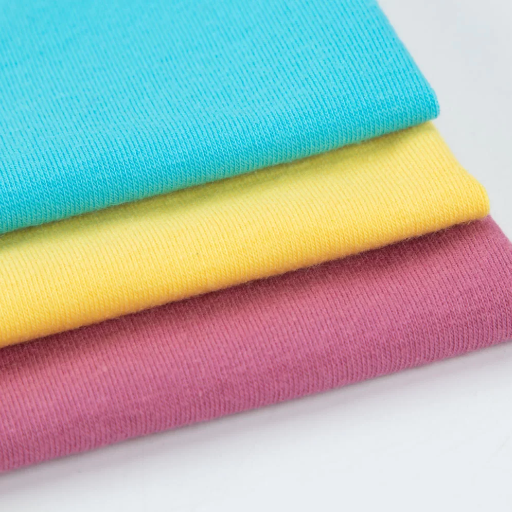
By blending cotton and polyester, one gets the best features from both fibers, with which fabric performance and durability can be enhanced. The advantages include the following:
- Improved Strength and Durability: Polyester adds strength to the blend, resisting wear that could degrade it. Thus, wear and tear are prevented, while the blend still presents cotton-like softness.
- Moisture Management: Cotton promotes airflow, and polyester dries quickly-wicking away sweat, thus increasing the comfort level of wear.
- Wrinkle and Shrink Resistance: Polyester fibers tend to reduce wrinkling and shrinkage, thus retaining their shape after washing.
- Ease of Maintenance: Combination results in a fabric that is lightweight and easy maintain and have a long service life.
- Cost-Effectiveness: Cotton-polyester blends are, generally, cheaper than pure cotton fabrics, making them a good option for applications in the interior.
Advantages of Polyester Blend Fabrics
- Durability and Strength
Polyester-blend fabrics are distinguished in tensile strength, and thus, resist tearing and abrasion. The synthetic fibers in the blend, much more than pure natural fibers, boost the resilience to daily wear and tear. For example, polyester-cotton blends have shown, on the basis of material testing standards, an approximately 30% increase in tensile strength over pure cotton fabrics.
- Moisture Resistance
It is the hydrophobic quality of polyester fibers that makes the fabric repel water and dry quickly when blended. The new correlation between polyester blends with outdoor gears, sports apparel, and upholstery is the decreased moisture absorption by up to 50% against fabrics of natural fibers, thereby improving their performance in wet conditions, according to some institutions of research.
- Wrinkle and Shrink Resistance
Its resistance to wrinkling and shrinking is its inherent advantage. The blended fabrics will, therefore, retain the shape and appearance far better over repeated washes and wears than pure cotton: for instance, polyester-cotton blends revealed an 80% reduction in wrinkle formation under controlled tests compared to pure cotton.
- Color Retention
Common Uses of Cotton and Polyester Blends
- Apparel Manufacturing
These fabric blends find heavy usage in everyday apparel manufacturing such as t-shirts, dresses, trousers, and activewear. Textile reports contend that approximately 60% of casual wear worldwide contains cotton/polyester blends because of its lightweight feel, moisture-wicking properties, and low maintenance.
- Home Textiles
Cotton-polyester blends are commonly found in home décor textiles, such as bedsheets, curtains, and upholstery. It has been shown by studies to increase the life span of the said products by about 25%, in contrast to their counterparts of pure cotton, thus putting cotton-polyester products higher on wear resistance, anti-pilling, and color retention.
- Workwear and Uniforms
Owing to their durability and resistance to heavy laundering cycles, they tend to be the typical selection for work uniforms, scrubs, and industrial wear. The polyester adds a wrinkle resistance, and the cotton adds some breathability so that they can keep you comfortable during a long day’s wear.
- Sportswear and Performance Clothing
Choosing the Best Fabric for Your Needs

- Purpose
The intended uses for cotton-polyester fabric are casual wear and athletic clothing-a double recording site for comfort and durability. Wool or silk would be more suitable for formal or professional settings.
- Durability
Consider the wear and tear the fabric will endure. Because of its toughness, resistance to stretching, and resistance to shrinking, polyester is brought into use in any garment where long wear is required or the item will be subjected to frequent laundering.
- Comfort
Comfort is important to casual wear. Fabrics infused with cotton are breathable and soft, and, therefore, apt for warm climates or for those with skin sensitiveness.
- Care Requirements
Consider the level of maintenance. A mixture of cotton/polyester is very easy to take care of and machine-washable, whereas natural materials such as silk or wool would require a dry cleaning process.
Analyzing the considerations, and evaluating them with respect to your needs, will give you a fabric that frolics well with your unique needs and like-sided preferences.
Comfort and Wearability
When going for a comfort evaluation in a garment, technical factors stand heavily into the judgment. Chiefly regarded is breathability, with fabrics such as cotton, linen absorbing moisture and circulating air-favorable for humid or warm conditions. Thermal insulation considerations will drive the fabric choices in the opposite direction, mainly towards something in wool or fleece that can efficiently trap heat in cold conditions. Texture and elasticity make up the feel and wearability of a fabric. Soft, smooth textures like silk or high thread count to gros cotton are friendly to the skin, and elastic fabrics provide texture such as spandex, elegance, and ease of movement; this is vital in any activewear. Additionally, modern advancements in textile engineering have introduced performance fabrics with moisture-wicking, antimicrobial, and UV-resistant properties, enhancing both comfort and longevity for specialized applications such as athletic or outdoor apparel. By integrating these considerations, one can make a more informed decision tailored to both environmental conditions and intended use.
Environmental Impact of Cotton vs Polyester
Cotton and polyester present a radically different effect on the environment due to the disparity of their production systems and lifecycle analyses. Being natural, cotton depends heavily on agricultural resources-watering and applying pesticides. For instance, it is estimated that in cotton production, for one kilogram, almost 20,000 liters of water are used, and that shows that it is a water-intensive crop. Furthermore, the chemicals used as pesticides and fertilizers in conventional cotton farming degrade the soil, pollute water, and destroy local ecosystems. Organic cotton farming eliminates synthetic chemicals; an alternative method that gives higher sustainability, but with lower yields.
Reference Sources
1. House of U
- Polyester: A synthetic fiber made from petroleum and natural gas. It is durable, colorfast, crease-resistant, and breathable but can feel sweaty in hot weather and may cause static in cold conditions.
- Cotton: A natural fiber from the cotton plant. It is soft, breathable, moisture-absorbent, and inexpensive but prone to shrinking, wrinkling, and fading after washing.
2. Well Fabric
- Polyester: Known for its durability, wrinkle resistance, and shape retention. However, it lacks breathability, absorbs little moisture, and can irritate sensitive skin.
- Cotton: Praised for its softness, breathability, and moisture absorption, making it ideal for comfort. However, it wrinkles easily, may lose shape after washing, and can fade over time.
- Polyester: A man-made fiber derived from petroleum. It is strong, hydrophobic, and thermoplastic but not sustainable or biodegradable.
- Cotton: A natural, breathable, and absorbent fiber with moderate strength that increases when wet. It is sustainable and biodegradable but requires purification to enhance absorbency.
Frequently Asked Questions (FAQs)
Q: What are the characteristics of polyester vs cotton?
A: Polyester is a synthetic fabric made from polyethylene terephthalate, while cotton is a natural fiber harvested from the cotton plant. Polyester is generally denser and heavier than cotton, making it less breathable. In contrast, cotton is known for its breathability and softness against the skin. When comparing durability, polyester fabrics often win, as they are resistant to wrinkling and shrinkage, while cotton may require more care to maintain its appearance. Ultimately, the choice between the two depends on the specific use, such as sportswear or everyday garments.
Q: How does moisture-wicking work in polyester vs cotton?
A: Polyester is known for its moisture-wicking properties, which means it can pull sweat away from the skin and keep you dry during physical activities. This makes polyester a popular choice for sportswear, as it helps regulate body temperature. On the other hand, cotton tends to absorb moisture, which can leave you feeling damp and uncomfortable during vigorous activities. While cotton is breathable, its absorbency can be a disadvantage when compared to polyester, especially in high temperatures. Therefore, for activewear, choosing polyester or a cotton-polyester blend can provide the best of both worlds.
Q: What are the advantages and disadvantages of cotton and polyester fabrics?
A: Cotton, being a natural fabric, is soft and breathable, making it comfortable for everyday wear. However, it does have some disadvantages, such as its tendency to wrinkle and shrink when washed. Polyester, as a synthetic fabric, is resistant to these issues and is often more durable. Yet, polyester is less breathable compared to cotton and can make you feel warmer in certain conditions. Understanding these advantages and disadvantages is crucial when deciding which fabric type suits your needs better, whether you’re interested in natural fabrics like cotton or more durable synthetic options.
Q: How do cotton and polyester fibers compare in terms of care and maintenance?
A: Cotton garments typically require more care compared to polyester. Cotton can shrink in high temperatures and may need to be ironed to maintain a crisp look. In contrast, polyester is less likely to wrinkle and can withstand high temperatures without shrinking. This makes polyester fabric easier to care for, especially for those with busy lifestyles. However, when combined in a cotton-polyester blend, you can enjoy the softness of cotton with the low-maintenance benefits of polyester. This blend offers a practical solution for those looking for easy-to-care-for clothing.
Q: What is the impact of choosing between polyester and cotton on sensitive skin?
A: For individuals with sensitive skin, cotton is often the preferred choice due to its natural fibers, which are less likely to cause irritation. Cotton feels soft against the skin and is generally hypoallergenic. Polyester, being a synthetic fiber, may not breathe as well and can trap heat and moisture, potentially leading to discomfort. However, advancements in textile technology have led to the development of softer polyester fabrics that are more skin-friendly. When selecting fabrics, it’s essential to consider how each material interacts with your skin, especially if you experience sensitivities.








